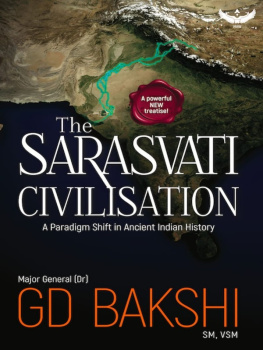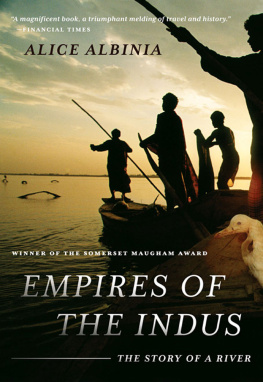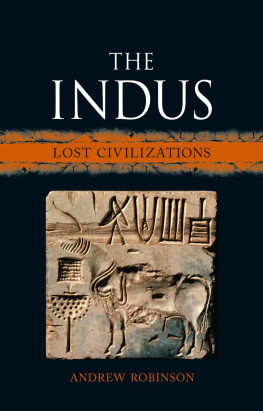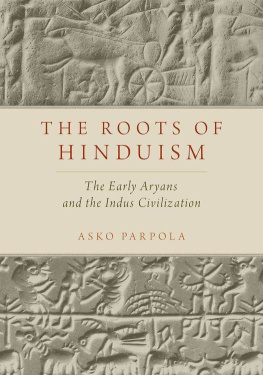Title Page
All About...
The Incredible Indus Valley
P S Quick
Publisher Information
Published in 2015 by
Andrews UK Limited
www.andrewsuk.com
The right of P S Quick to be identified as the Author of this Work has been asserted in accordance with the Copyright, Designs and Patents Act 1998
Copyright 2015 P S Quick
All rights reserved. No part of this publication may be reproduced, stored in a retrieval system, or transmitted, in any form or by any means without the prior written permission of the publisher, nor be otherwise circulated in any form of binding or cover other than that in which it is published and without a similar condition being imposed on the subsequent purchaser. Any person who does so may be liable to criminal prosecution and civil claims for damages.
Photo Credits:
Small Figurines from the Indus Valley courtesy of Trish Mayo
Great Bath of Mohenjo-daro courtesy of Comrogues
Introduction
This book, filled with amazing facts and photographs, describes what life was like for people living in the ancient Indus Valley. It gives an in-depth account of all aspects of the life and people of the time, providing examples of their incredible skills and organisation - including their cities, industry, trade, science, technology, engineering and all aspects of everyday life.
The All About series is an educational collection of books by P S Quick, and is targeted to interest 7 to 11 year olds - but will fascinate readers of all ages. At the end of each book there is a quiz section for the reader, featuring 150 questions and answers.
The Incredible Indus Valley
The Indus Valley civilization, also known as the Harappan civilization, began about five thousand years ago and lasted for over a thousand years. Some modern historians also refer to it as the Sindhu Sarasvati civilization. This is because in recent times many more settlements have been discovered along the dry bed of the Ghaggar River, which is now recognised as being the ancient Sarasvati River, than along the Indus River.
It was not only one of the earliest world civilizations such as those of Egypt, Mesopotamia and China but also the biggest covering the area that is now Pakistan and western India today. It is famous for its large and well-planned cities that were laid out on a grid system of roads. It is believed that these cities were not independent but connected with each other by their activities.
Sadly it is the civilization that we know least about because although the Indus script has been found on many artefacts it has not yet been deciphered correctly. However, more is being found out every year by archaeologists who use carbon dating and other modern technology to date artefacts and carry out field studies in areas of interest. Aerial photographs have also been taken and satellite imaging has enabled us to see such things as the ancient trade routes.
Geography of the Indus Valley
The River Indus played an important part in the development of the Harappan civilization. The Indus is the longest river in Pakistan travelling over three thousand kilometres from its source in the Himalayas until it flows into the Arabian Sea.
Melting glaciers and natural springs flow down the mountains and into the river picking up the fertile silt from the ground over which it passes. Every year the river would flood so that when the waters went down a large area would be covered with a layer of fertile soil.
The first people to visit the area around five thousand years ago were nomads. On the large floodplain of the Indus they found a rich fertile soil where they could grow their food. They began to settle and farm instead of living a life as hunter gatherers.
The mountains and the Arabian Sea provided shelter from attack and disease. The river provided a water supply for drinking, washing and irrigation and also a way to transport their goods. The forests provided fuel and the resources to build boats. Soon settlements began to grow up along the banks and floodplain of the River Indus and its tributaries.
It is also believed that there was another river that ran parallel to the River Indus. This river was known as the Sarasvati River. The bed of this river is now dry but researchers are tracing its banks and in doing so have found even more ancient towns and cities.
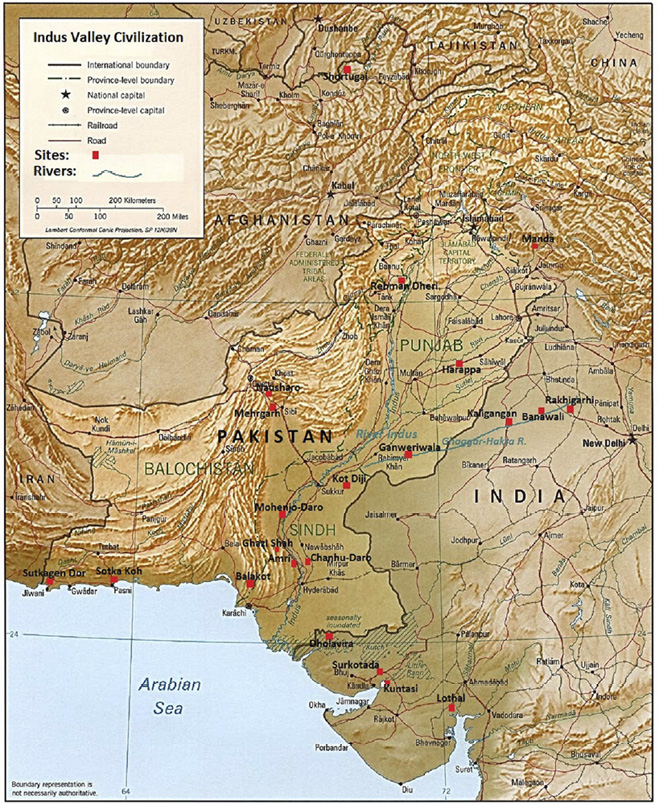
The Indus Valley Civilization
Although dates vary slightly according to different reports these early Harappan settlements date back to around 3300BC and the civilization thrived until around 1700 BC when it collapsed. The civilization was at its peak from around 2500 BC when these settlements developed into cities that were no longer only dependent upon agriculture. The Harappan civilization takes its name from the first city to be excavated in the 1920s that was named as Harappa after a nearby village.
The First Cities are Discovered
Since the 1920s over a thousand settlements and cities have been found, many with stone seals and artefacts such as those found in Harappa and Mohenjo-daro. The cities were as old as the pyramids in Egypt. In some cities new houses were built on top of the old ones as the old bricks crumbled so that the cities grew higher.
Harappa and Mohenjo Daro were large cities but there were also smaller ones such as Banawali, Lothal, Kalibangan and Dholavira. These are modern names given to the ancient cities because their original names are not known.
Cities such as Harappa and Mohenjo-daro were well planned and often had a citadel built on high ground, surrounded by thick walls, sometimes as high as twelve metres. The walls may have been for protection against floods as much as from invasion. The citadels of the Indus Valley are believed to be some of the earliest in the world.
A citadel is a fortress that protects the city. In some cultures it would have contained a castle but the ones in the Indus Valley were probably more where a centralised authority lived. Inside this citadel there were large buildings including ones where grain was stored. Strangely there were no huge monuments like those found in other ancient civilizations or tombs such as those in Egypt that held great riches or embalmed bodies.
The streets were wide and straight and built upon a grid pattern. Although the side streets were narrow alleys the main streets were often ten metres wide, which meant there was room for carts to pass each other. The corners of the roads were also rounded so that carts could turn smoothly. Settlements were built on high ground or giant platforms to lift them up from the danger of floods.
Most people believe the Indus valley civilization to be a very peaceful one because very few weapons have been found and there is no evidence of any army. The buildings and most human bones found show no evidence of the scale of violence seen in other ancient civilizations.
Indus Valley Seals
The first seal was found by the archaeologist Alexander Cunningham in 1872 in Harappa. Since then over four thousand seals have been found and in the future there will probably be many more. These seals were just flat pieces of stone, usually about two or three centimetres square, although both larger and smaller ones have also been found.
The seals were probably used to seal documents and to mark packages of goods. From this evidence people suggest that the Indus civilization was part of a long distance trading network. Indus Valley seals have been found at ports in Western India such as Lothal and also in other faraway places such as in Mesopotamia, which today is known as Iraq. This is evidence that trading took place between these civilizations.
Next page







